The board at a glance
Now let's look at the board. What is striking first is the excess of coils that remind us of a space and distribution problem. In terms of marketing, one writes of 16 phases for the GPU, which is of course nonsense, because there are actually only eight. However, since two individual converter circuits are controlled per phase by means of phase doubling, there are at least 16 voltage converters for the GPU.
But you can no longer get this side-by-side or arranged with each other on the board, so that in the end it has to be pieced together. We see a total of 14 control circuits arranged for 7 phases among each other, the eighth phase moves to the bottom right of the board. This is a bit unfortunate for the cooling. The voltage converters for the memory can be found at the top, to the left of the 14 controllers for the GPU.
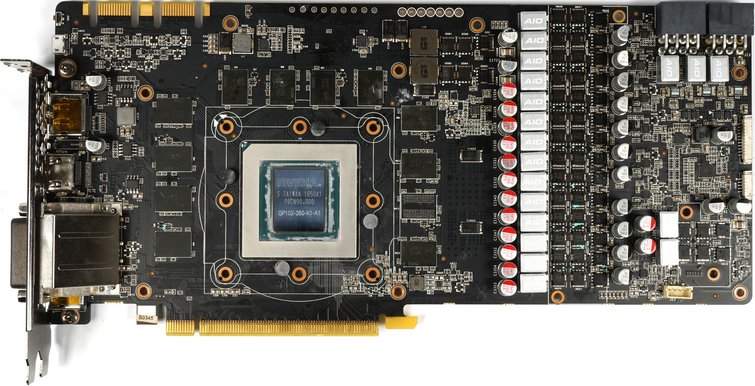
The eight real phases for the GPU also need the right PWM controller, for which you can rely on an uP9511 from uPI Semiconductor, which, including OpenVReg 4+, can realize everything the manufacturer and user want. With the uP9111, a special phase doubler and dual-channel MOSFET driver is used per phase in the form of the matching uP1961, which then controls two control circuits. There are thus 16 single voltage transformer circuits, two of which are controlled in parallel and no 16 individual phases.
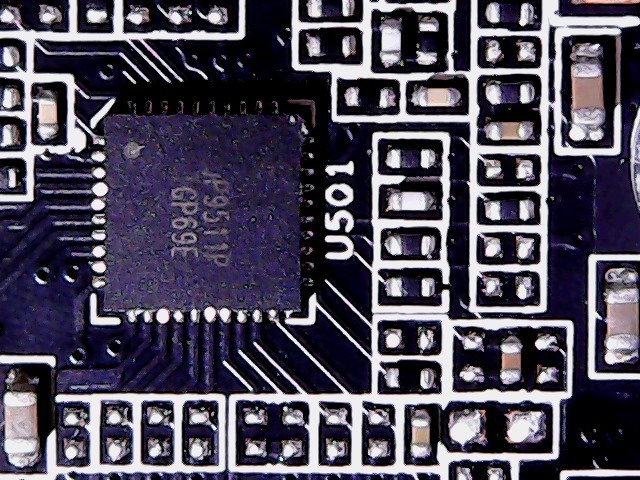 |
 |
For each of the control circuits, one QN3103 is used on the high-side and two QN 3107 on the low-side. These are all from UBIQ, a brand of uPI Semiconductor.
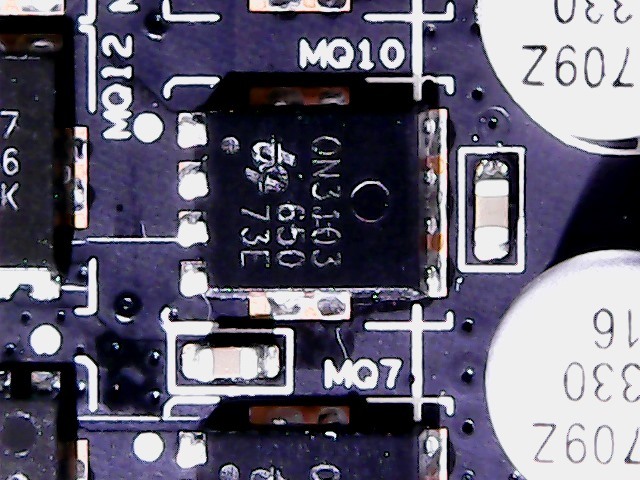 |
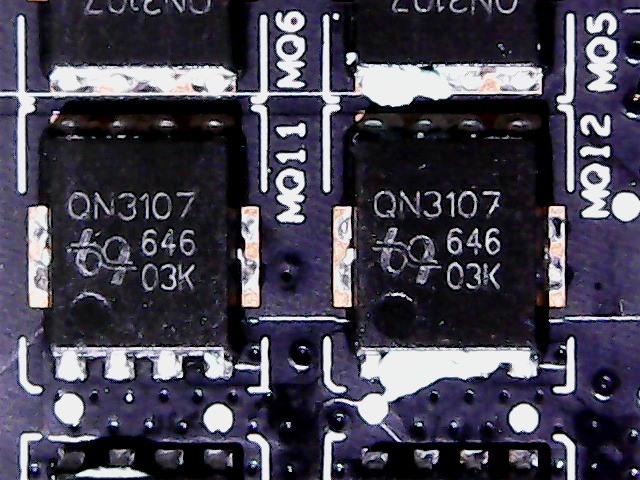 |
The encapsulated ferrite core coils are old acquaintances and, although they are built vertically internally, cannot solve the space problem on the board. What Zotac calls a "Power Boost" capacitor is guaranteed to end up under the aluminum cap as nothing more than a board with SMD polymers, which is intended to further smooth the voltage supply (ripple). However, since the DC/DC controllers and the output voltage quality already have extremely tough requirements and low tolerance ranges, it is Zotac's answer to the ultra-durable military class action of the other PR colleagues.
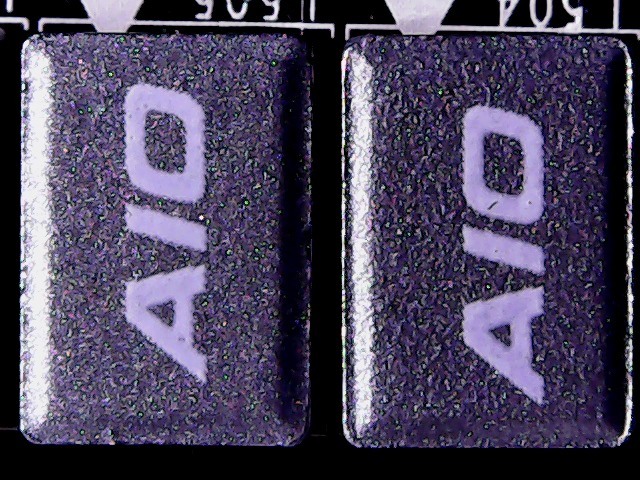 |
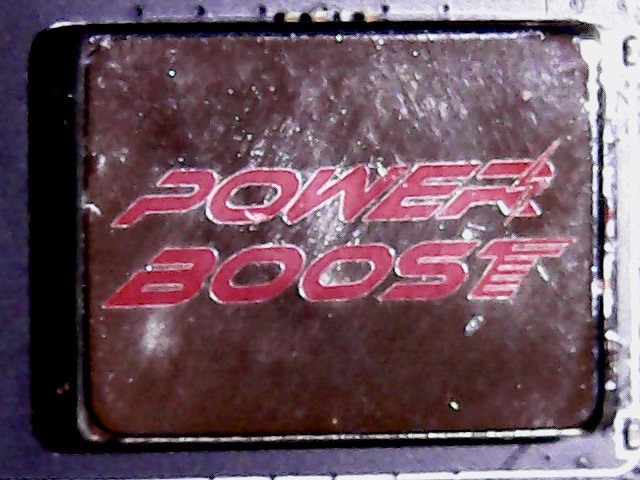 |
What also caught our eye with the board was the 32-bit ARM Cortex M0+ processor from Holtek, which Zotac uses only for controlling the RGB effects. After so much electricity and light, let's finally come to the store.
A total of 11 of the new G5X-Micron modules of type MT58K256M321-Ja110, which offer up to 11 GByte/s and are therefore intended to compensate the missing 32 bits of the memory interface with a higher clock speed of 5500 MHz (effectively), are installed on this card. We are somewhat surprised that Nvidia didn't install the MT58K256M321-Ja120, which clocks a little higher.
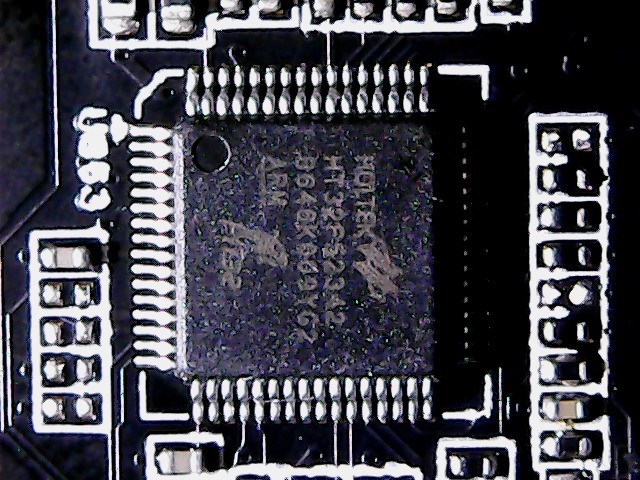 |
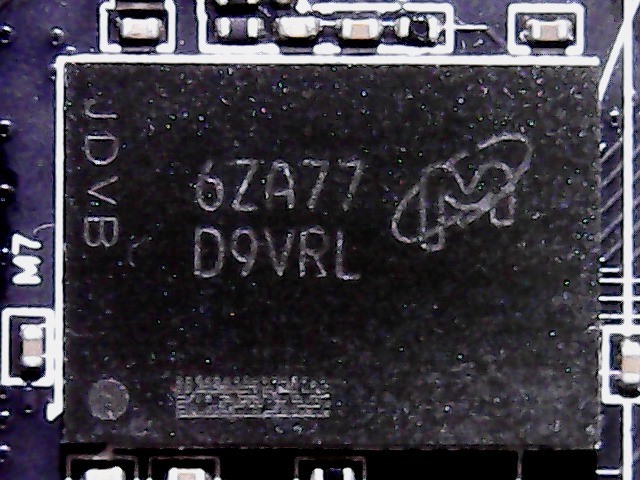 |
Nevertheless, Zotac was the first major manufacturer to overclock these memory modules even ex works on 1400 MHz. This is not a huge step for the customers, but at least a nice entry within the scope of the manufacturer's warranty.
The power supply of the memory is located at the top left of the GPU VR and is released via an uP1660 from uPI Semiconductor, which can provide a total of two phases as a buck controller.
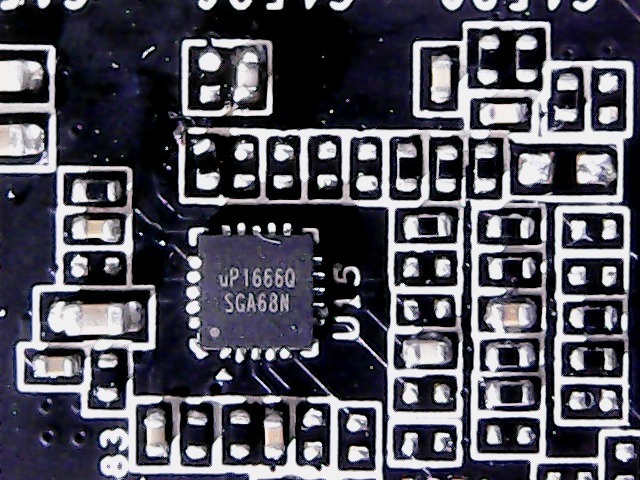 |
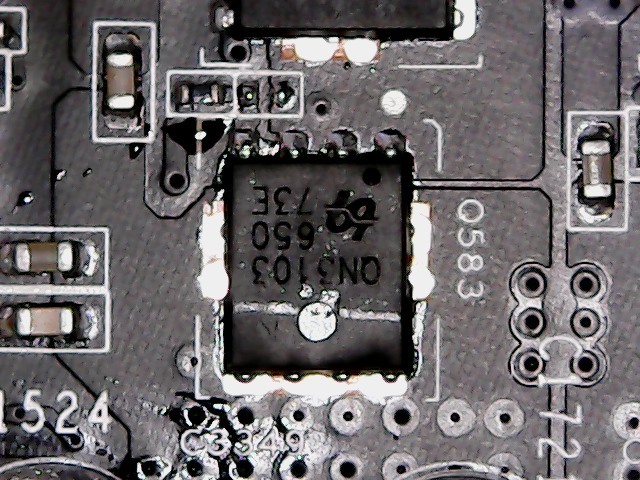 |
For each of the two phases, one QN3103 on the high-side and two QN 3107 on the low-side, both from UBIQ, are used again. This time, simpler SMD components are used as coils, which are almost identically known as Magic Coils from Foxconn.
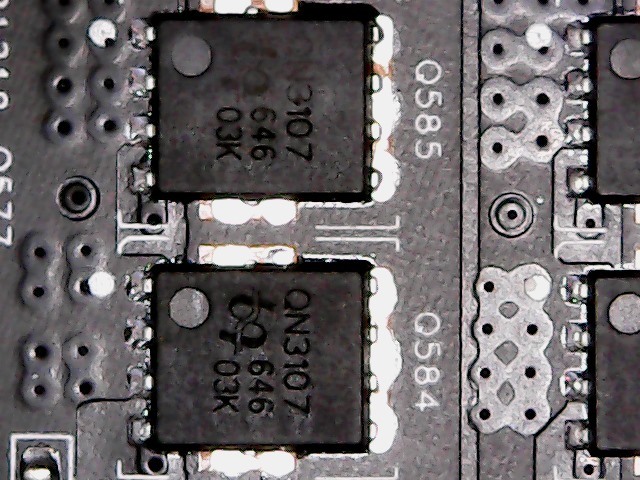 |
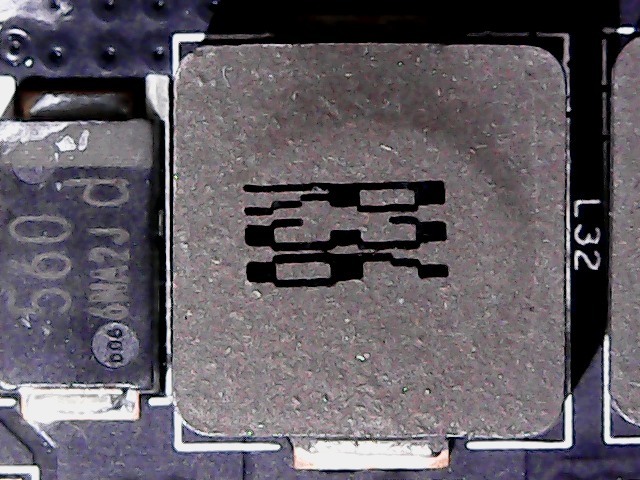 |
The usual INA3221 is a monitoring chip for the flowing currents, as well as the adjacent voltages and in the end also protects the technology from overloads. The three shunts in the entrance area are used to determine the current flow to be monitored and with the three coils in the two 8-pin power sockets, Zotac even has some kind of filtering of the spikes in the portfolio, which may well please and cheaper power supplies should be very accommodating.
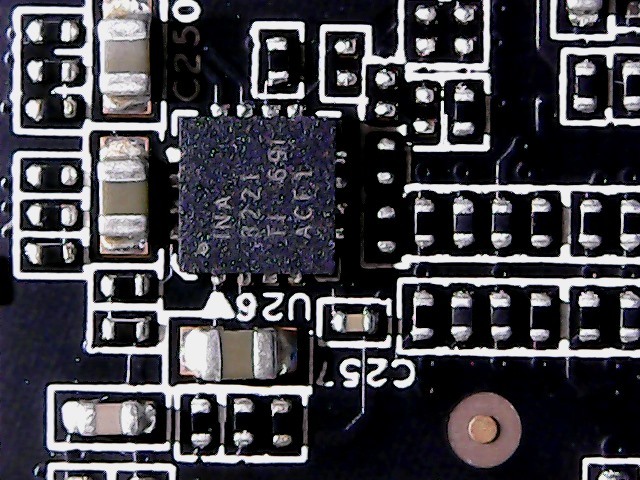 |
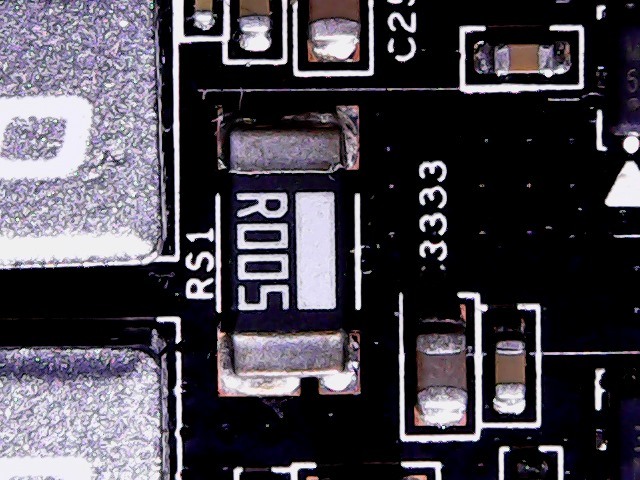 |
The back shows once again the linear arrangement of the components among each other and the surfaces that could have been used for a backplate cooling.
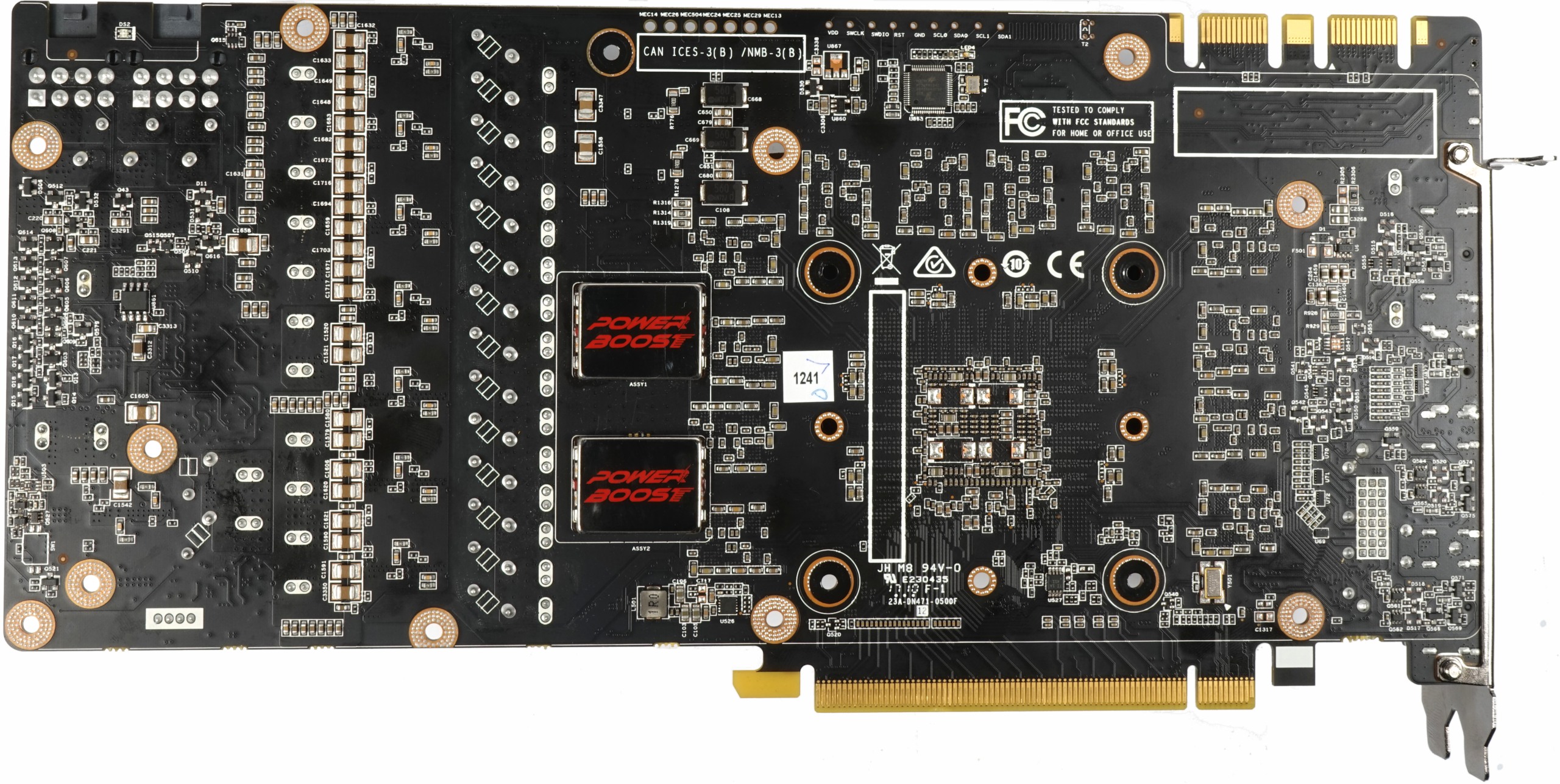 Cooling concept and implementation
Cooling concept and implementation
Unfortunately, the used backplate without internally glued film serves only the optics and stabilization of the radiator structure, but not also for passive cooling, which we will analyze in even more detail later in the infrared tests. In addition, a light guide film illuminated with an RGB diode has been glued together, which is supposed to stage the Zotac logo. A few air holes should at least provide the airflow behind the board.
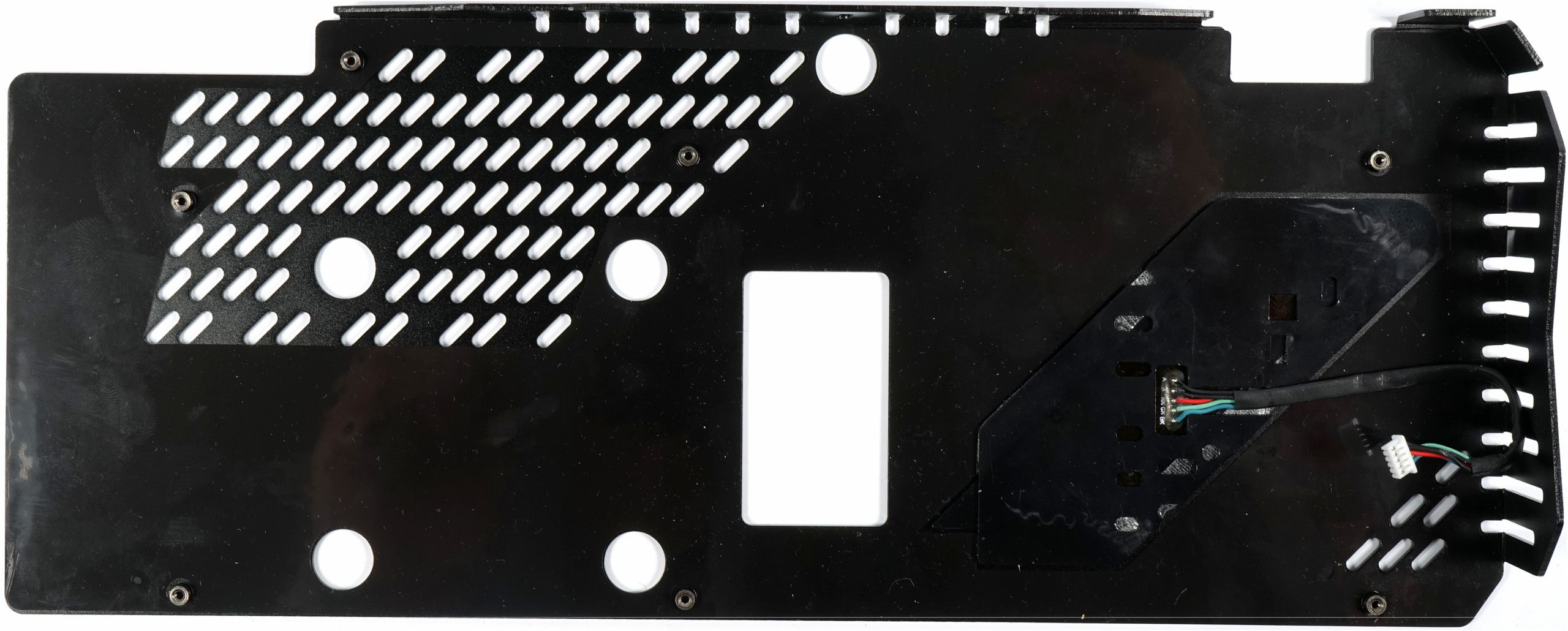
We already mentioned that there is no heat sink integrated in the main cooler for the voltage converters. We also know that the VR had to be spatially split up due to the many control circuits. This logically results in two separate heat sinks for the MOSFETs, which are then encircled under the strand aluminium together with thermal guide pads. The coolers are tightly screwed with the board and are supplied with fresh air from above.

The radiator itself is a coarse, heavy-duty powerhouse whose copper heat sink feeds a total of two 8 mm and four 6 mm composite heatpipes with the absorbed GPU waste heat. The memory modules are cooled by a circumferential aluminium plate, which is attached to the heat sink.
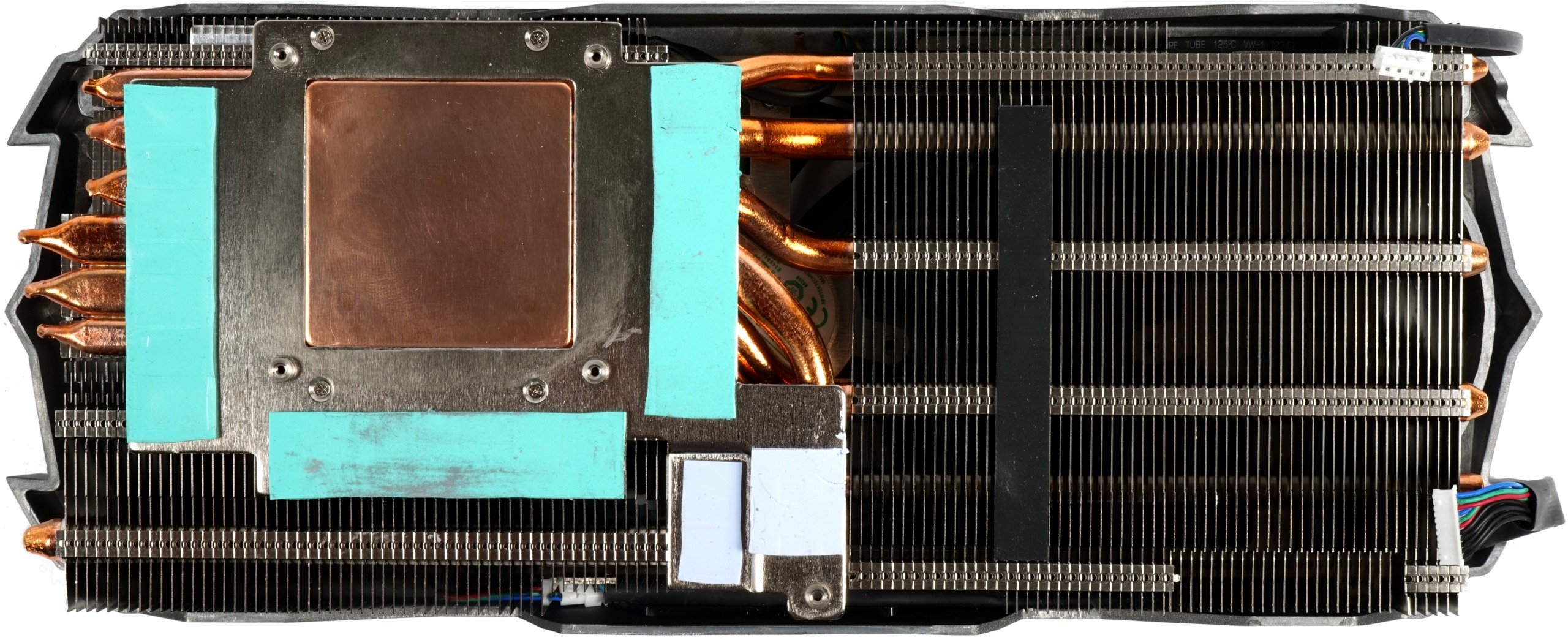
This plate also acts as a heat sink for the memory VR, cooling the MOSFETS, as well as the two coils of the two phases for the storage supply.
The three fans used, each with a rotor diameter of just under 85 mm, are designed for throughput with their 9, fairly steeply employed rotor blades per fan and are not designed for pure uniform static pressure. However, we will have to come back to these fans later, when it comes to fan control and speeds, because Zotac has pulled himself out of the affair this time rather cleverly.

































Kommentieren